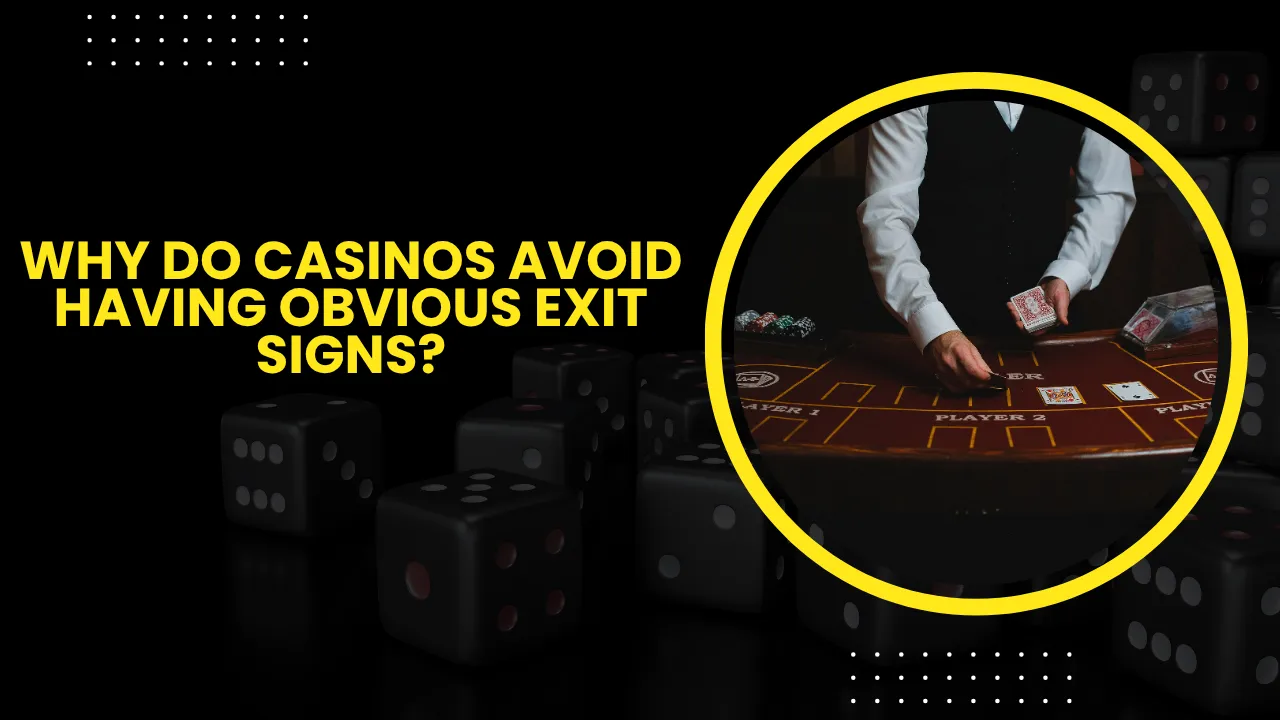If you’ve ever spent time in a casino, you may have noticed something curious: exits are rarely obvious. Unlike in shopping malls or airports where large illuminated signs guide people toward the doors, casinos seem to almost hide their way out. This design choice isn’t accidental — it’s a carefully considered part of casino psychology and architecture.
Casinos are built to keep people engaged, immersed, and playing for as long as possible. From the moment you walk in, every detail — lighting, layout, and even the placement of the exits — is crafted to encourage you to stay. But why would such an iconic entertainment venue avoid making exits clear, and what does it mean for players? Let’s explore.
The Psychology of Time and Space in Casinos
Casinos are masters of controlling perception. One of the most common techniques they use is to create an environment where time feels suspended. There are often no windows to show daylight, no clocks on the walls, and few cues that remind you of the outside world.
Obvious exit signs break that illusion. If a guest can easily see the way out, it subtly reinforces the idea that they could leave at any moment. By making exits less noticeable, casinos reduce this subconscious reminder, keeping players focused on the games rather than on leaving.
The environment is designed to be immersive, almost maze-like, drawing attention inward rather than outward. In fact, many casino layouts intentionally guide foot traffic past more gaming areas on the way to restaurants, restrooms, or shows. This way, even when players are headed somewhere specific, they encounter more opportunities to play.
Encouraging Longer Play Through Subtle Design
Every aspect of a casino floor is optimized to encourage extended play. Comfortable seating, complimentary drinks, and a stimulating atmosphere are part of the formula. Exits, however, are strategically downplayed because they represent the end of the session.
Research in behavioral psychology shows that people are more likely to continue engaging in an activity if they face few distractions or reminders of stopping. In casinos, the lack of prominent exit signs helps reduce those “stopping cues.” Instead of being reminded of leaving, players are nudged to keep exploring, often flowing from one game to another.
This isn’t unique to brick-and-mortar casinos either. Online platforms use similar tactics by minimizing “logout” prompts and keeping players within a seamless interface. For example, no kyc crypto casinos highlight convenience and uninterrupted play, much like physical casinos hide exit cues. Both approaches emphasize frictionless engagement as a way to maintain momentum.
Balancing Experience with Legal Requirements
While casinos avoid making exits too obvious, they are still legally required to meet fire safety and building codes. Emergency exits must be clearly marked and accessible, and you’ll always find illuminated signs pointing toward them if you look carefully. These signs may not be front and center, but they exist in compliance with regulations to ensure safety in the event of an emergency.
The subtle difference lies in placement and prominence. Instead of being oversized and visible from every angle, casino exit signs are often more discreet, blending with the design so that they don’t interfere with the overall atmosphere. This balance between compliance and psychology allows casinos to meet safety standards without undermining their immersive environments.
The Role of Flow and Navigation
Casinos are designed almost like theme parks, with flow in mind. Architects and designers carefully plan pathways to direct where guests go. Entrances and exits are placed in ways that encourage people to pass by rows of slot machines, card tables, or high-stakes areas.
The less obvious the exits, the more guests end up wandering. This wandering often leads to spontaneous decisions — maybe trying a new slot machine, sitting down at a roulette table, or grabbing a meal within the casino property instead of leaving. From a business perspective, this flow is invaluable, as it maximizes exposure to different revenue streams within the venue.
How Subtle Design Impacts Players
For players, the absence of obvious exits can feel both seamless and disorienting. On the one hand, it contributes to the escapist quality of visiting a casino. Many guests want to lose track of time, immerse themselves in the excitement, and enjoy the entertainment without distractions.
On the other hand, it can also make it harder for people who want to leave quickly. This is why responsible gaming advocates often call attention to these design choices, encouraging players to set time limits and use reminders outside of the casino environment. Recognizing these strategies helps players stay more mindful about how long they’ve been playing.
Comparisons to Online Gambling Environments
In the online gambling world, similar principles apply — but instead of physical exit signs, it’s about how platforms structure their interfaces. Logout buttons may be small or tucked into menus, while deposit options are front and center. Games are designed to load quickly with minimal friction, encouraging continued play.
The philosophy is the same: remove barriers to entry and reduce cues that encourage leaving. Whether you’re in a glittering casino on the Las Vegas Strip or playing online at home, the design encourages immersion above all else. The difference is that in physical casinos, it’s the architecture and signage, while online it’s the user interface and payment systems.
The Future of Casino Design
As casinos evolve, the trend of downplaying exits is unlikely to change. Modern venues are becoming even more sophisticated in their design, incorporating technology such as interactive floors, dynamic lighting, and integrated apps to keep players engaged. Virtual and augmented reality casinos may soon take this concept further by creating entirely immersive environments where “exits” are not physical but digital — perhaps a logout button hidden in the corner of a VR headset view.
Still, regulators and responsible gaming initiatives will continue to push for balance. Transparency, player protection, and accessibility remain important, even as casinos innovate. It’s possible that future designs may offer more tools for players to monitor their time and spending without making the experience feel less engaging.
Conclusion
The reason casinos avoid obvious exit signs is simple but powerful: they want to keep you playing. By blending exits into the environment and reducing reminders of the outside world, casinos extend player engagement, increase revenue, and maintain a sense of immersion. It’s a subtle but effective strategy rooted in psychology and design.
Yet, while these strategies enhance the entertainment experience, they also raise questions about responsibility. For players, being aware of these design choices is the first step toward playing mindfully and enjoying casinos for what they are — entertainment venues.
The next time you find yourself in a casino, try spotting the exits. You’ll likely notice they’re there, just not as obvious as in other public spaces. That’s by design, and it’s part of what makes casinos such unique, immersive environments.









